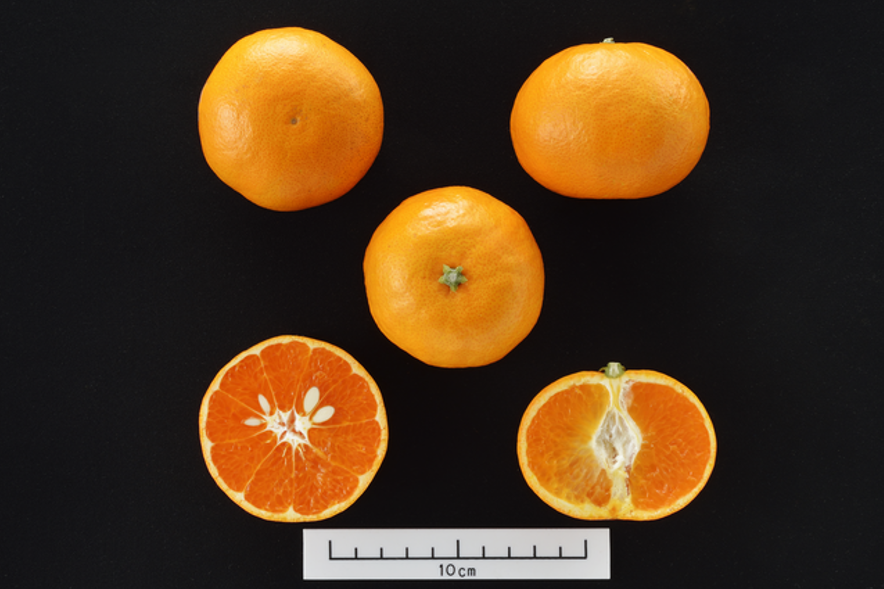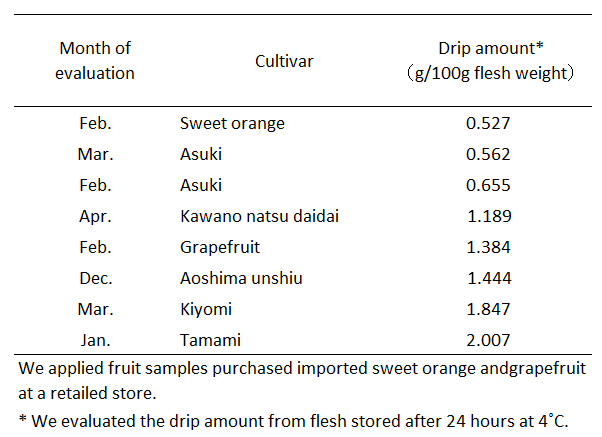- The National Agriculture and Food Research Organization (NARO) has developed a late-ripening citrus cultivar 'Asuki' with extremely high sugar content and a rich flavor. 'Asuki' seedlings are in the market since December 2020.
- 'Asuki' fruits with high sugar content can be stably produced without drought stress treatment. 'Asuki' has the fruit characteristics suitable for the processing, especially for fresh-cut products with increasing consumer demand, since it has less drip amount after processing and storage as same as that of sweet oranges.
Overview
In Japan, various mandarin-type cultivars with high fruit quality have been developed, however most of them ripe from January to March. The mandarin-type cultivars ripening after March are limited. On the other hand, the recent trend shows the increasing demand for easy-to-process fruit cultivars, while the consumption of fresh fruits stays at low, sales of fresh-cut products in small packages are increasing. However, most of the citrus cultivars in the market are likely to have much drip from the fresh-cut fruits on the shelf, causing to lower their commercial values.
'Asuki' is a new late ripening citrus cultivar released by NARO. It originated from a cross between Okitsu No. 46 ('Sweet Spring' × sweet orange 'Trovita') and 'Harumi' that was performed in 1992. The fruit weighs about 180g and has an oblate shape. The rind is orange and has medium peelability. The soluble solid contents (Brix) in juice is extremely high (about 15%), and the acidity decreases to about 1 g/100 mL in the ripe fruit. The fruit contains about 7 seeds. The fruit ripens after March. Also, fresh-cut 'Asuki' fruits has less drip amount after processing and storage as same as that of sweet oranges (Table 2). Therefore, 'Asuki' gives producers a choice to supply extremely sweet citrus fruits to the markets after the main season of other cultivars.
'Asuki' can be cultivated in most of the citrus production areas. However, we recommend them to be cultivated in areas where the winter temperature will not be under -2 ̊C - -3 ̊C, because the cold temperature will make the fruits frozen and result in drying juice sac in the ripening stage.
For Inquiries
Contact: http://www.naro.affrc.go.jp/english/inquiry/index.html
Reference Information
Table 1. Fruit characteristics of 'Asuki', 'Asumi' and 'Setoka' from 2013 to 2015 at NARO, Shizuoka, Japan.


Table 2. Comparing the drip amount from fruit flesh among citrus cultivars.





